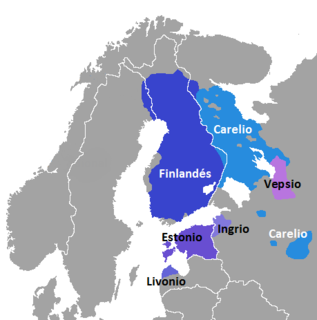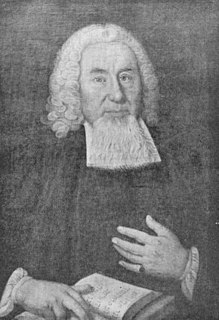
The Uralic languages form a language family of 38 languages spoken by approximately 25 million people, predominantly in Northern Eurasia and in the European Union. The Uralic languages with the most native speakers are Hungarian, Finnish, and Estonian, which are official languages in Hungary, Finland, and Estonia, respectively. Other Uralic languages with significant numbers of speakers are Erzya, Moksha, Mari, Udmurt, and Komi, which are officially recognized languages in various regions of Russia.
Votic, or Votian, is the language spoken by the Votes of Ingria, belonging to the Finnic branch of the Uralic languages. Votic is spoken only in Krakolye and Luzhitsy, two villages in Kingiseppsky District, and is close to extinction. In 1989, there were 62 speakers left, the youngest born in 1938. In its 24 December 2005 issue, The Economist wrote that there are only approximately 20 speakers left.

Karelian is a Finnic language spoken mainly in the Russian Republic of Karelia. Linguistically, Karelian is closely related to the Finnish dialects spoken in eastern Finland, and some Finnish linguists have even classified Karelian as a dialect of Finnish. Karelian is not to be confused with the Southeastern dialects of Finnish, sometimes referred to as karjalaismurteet in Finland.

The Fennomans, members of the most important political movement (Fennomania) in the 19th-century Grand Duchy of Finland, built on the work of the fennophile interests of the 18th and early-19th centuries.
Finns or Finnish people are a Finnic ethnic group native to Finland.
The University of Turku, located in Turku in southwestern Finland (EU), is the second largest university in the country as measured by student enrollment, after University of Helsinki. It was established in 1920 and also has faculties at Rauma, Pori and Salo. The university is a member of the Coimbra Group.

Mynämäki is a municipality of Finland located in the Southwest Finland region. Neighbouring municipalities are Aura, Eura, Laitila, Masku, Nousiainen, Pöytyä, Rusko, Taivassalo, Turku and Vehmaa.
Helsinki slang or stadin slangi is a local dialect and a sociolect of the Finnish language mainly used in the capital city of Helsinki. It is characterized by its abundance of foreign loan words not found in the other Finnish dialects.
Sanas Cormaic, also known as Cormac's Glossary, is an early Irish glossary containing etymologies and explanations of over 1,400 Irish words, many of which are difficult or outdated. The shortest and earliest version of the work is ascribed to Cormac mac Cuilennáin, king-bishop of Munster. It is an encyclopedic dictionary containing simple synonymous explanations in Irish or Latin of Irish words. In some cases, he attempts to give the etymology of the words, and in others he concentrates on an encyclopedic entry. It is held to be the earliest linguistic dictionary in any of the non-classical languages of Europe. Many of its entries are still frequently cited in Irish and Celtic scholarship.
An etymological dictionary discusses the etymology of the words listed. Often, large dictionaries, such as the Oxford English Dictionary and Webster's, will contain some etymological information, without aspiring to focus on etymology.

Finnish literature refers to literature written in Finland. During the European early Middle Ages, the earliest text in a Finnic language is the unique thirteenth-century Birch bark letter no. 292 from Novgorod. The text was written in Cyrillic and represented a dialect of Finnic language spoken in Russian Olonets region. The earliest texts in Finland were written in Swedish or Latin during the Finnish Middle Age. Finnish-language literature was slowly developing from the 16th century onwards, after written Finnish was established by the Bishop and Finnish Lutheran reformer Mikael Agricola (1510–1557). He translated the New Testament into Finnish in 1548.

The Diocese of Tampere is the second oldest and the largest diocese in the Evangelical Lutheran Church of Finland. It is divided into 69 parishes with a total population of over 660,000 people. The diocese is led by the Bishop of Tampere.
A reverse dictionary is a dictionary organized in a non-standard order that provides the user with information that would be difficult to obtain from a traditionally alphabetized dictionary. There are two principal types of reverse dictionaries: reverse word dictionaries, and reverse concept dictionaries. This article discusses reverse word dictionaries; see conceptual dictionary for reverse concept dictionaries.

Nykysuomen sanakirja is a Finnish language dictionary published between 1951 and 1961 in six separate volumes. The dictionary was edited by the Finnish Literature Society and published by WSOY. It is the first monolingual Finnish dictionary and has over 201,000 headwords. It is the most comprehensive Finnish language dictionary. Throughout the years, it has enjoyed major academic significance. The dictionary has never been updated: all later editions contain the same content, which reflects the language as it was before the mid-20th century. The need for a modern dictionary has led to the publication of The New Dictionary of Modern Finnish.

The corpus of traditional riddles from the Finnic-speaking world is fairly unitary, though eastern Finnish-speaking regions show particular influence of Russian Orthodox Christianity and Slavonic riddle culture. The Finnish for 'riddle' is arvoitus, related to the verb arvata ('guess').
Finnish national symbols are natural symbols or Finnish national works and prominent figures that are commonly associated with Finland. The most recognized national symbols include the flag of Finland and the lion featured on the Finnish coat of arms.
Jacobus Petri Finno, sometimes known as Jaakko Finno or the Finnish form of his name Jaakko Suomalainen, was a Finnish priest and the rector (headmaster) of the Cathedral School of Turku. He was the publisher of the first Finnish-language hymnal as well as a catechism and a prayer book. Finno was doctrinally a moderate reformer.











